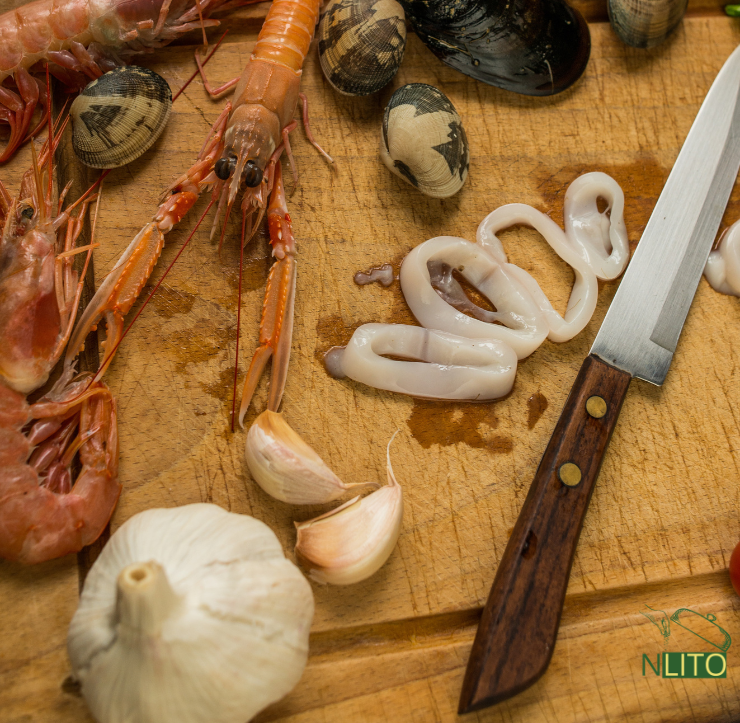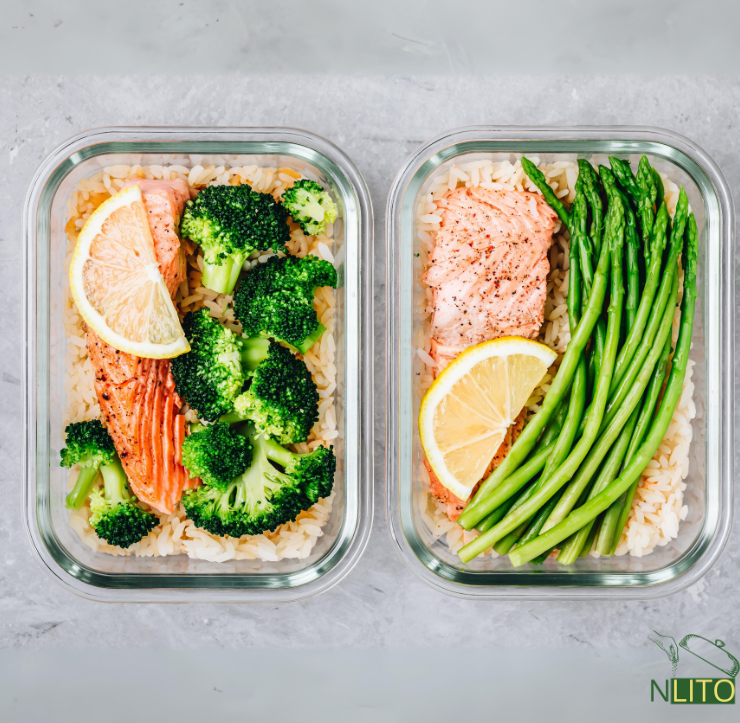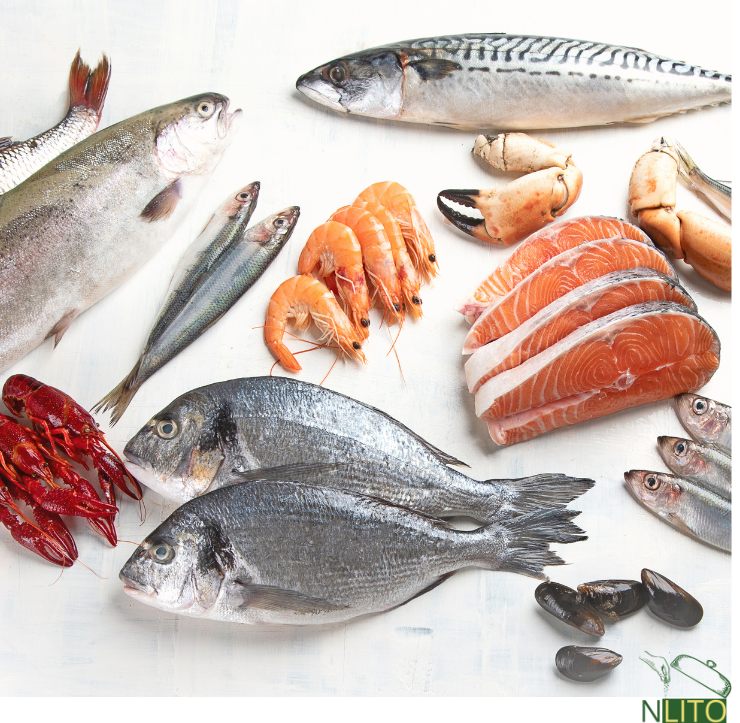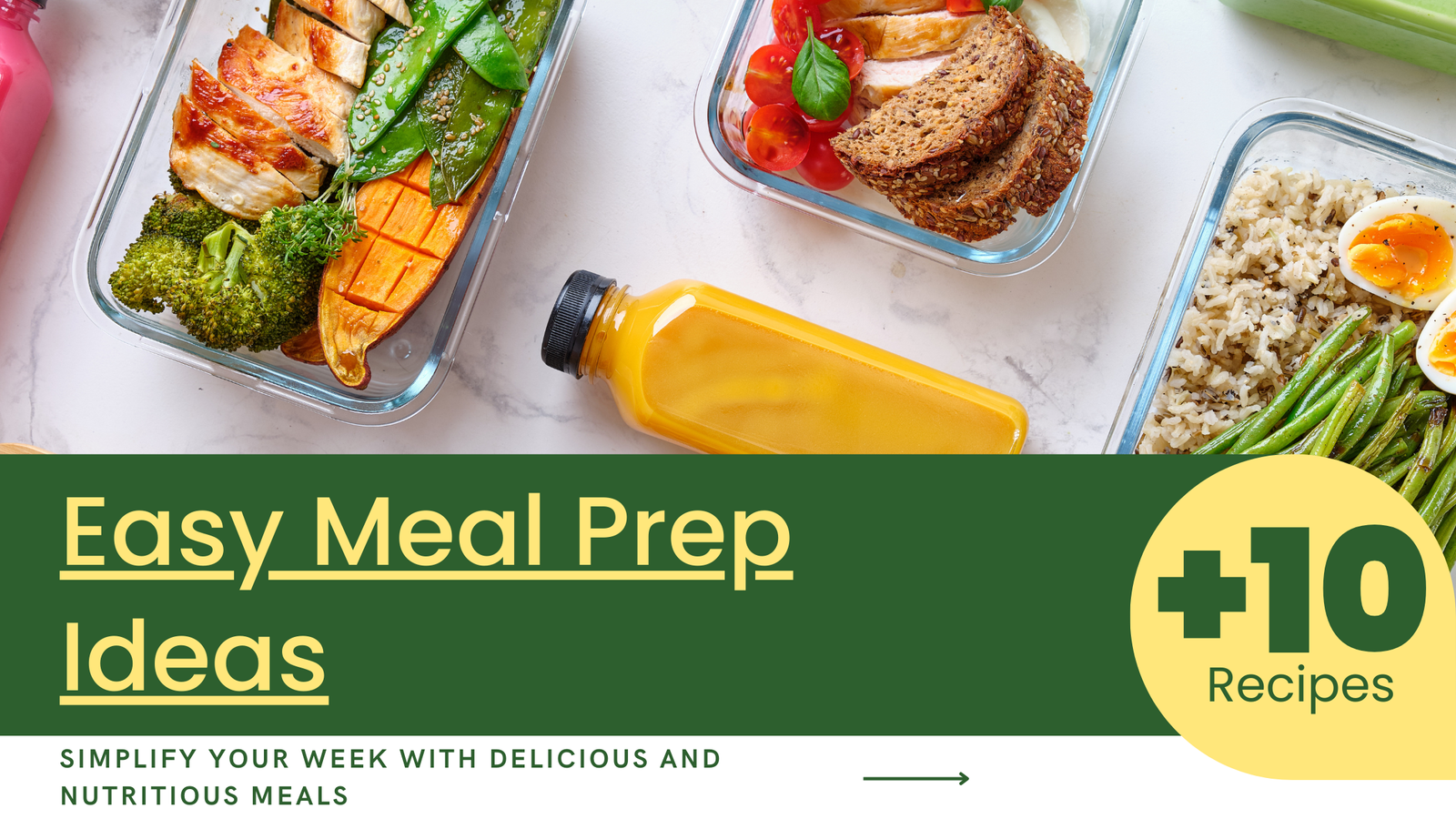Introduction to Seafood Meal Prep
Seafood is a powerhouse of nutrients, offering high-quality protein, omega-3 fatty acids, and essential vitamins and minerals that support overall health. Incorporating seafood into your diet can improve heart health, brain function, and even boost your mood. However, preparing seafood can be time-consuming, and without proper planning, it’s easy to resort to less healthy options. This is where meal prepping comes in.
Meal prepping with seafood allows you to enjoy delicious, healthy meals throughout the week without the daily hassle of cooking. By planning and preparing your meals in advance, you can ensure that you’re meeting your nutritional needs, saving time, and avoiding the temptation of unhealthy takeout. In this guide, we’ll explore a variety of seafood meal prep ideas that are not only nutritious but also easy to make.
Essential Tools and Ingredients for Seafood Meal Prep
Must-Have Kitchen Tools for Preparing and Storing Seafood
To make seafood meal prep efficient and enjoyable, having the right kitchen tools is essential. A few must-haves include a sharp fillet knife for cutting fish, a fish spatula for easy flipping, and a steamer basket for cooking shellfish like shrimp or clams. Additionally, a digital food thermometer ensures that your seafood is cooked to the perfect temperature, avoiding undercooking or overcooking.
For storage, invest in airtight containers that are both freezer and microwave-safe. These will keep your prepped seafood meals fresh and make reheating a breeze. Glass containers are a great option as they don’t absorb odors and are easy to clean.
Recommended Seafood Types for Meal Prepping
Not all seafood is equally suited for meal prep. Some types, like salmon, cod, and shrimp, hold up well when stored and reheated, making them ideal for prepping ahead. Salmon is rich in omega-3 fatty acids and has a robust flavor that pairs well with a variety of seasonings. Cod is a leaner fish with a mild taste, making it versatile for different recipes. Shrimp is quick to cook and can be used in a wide range of dishes, from salads to stir-fries.
Other seafood options like scallops and mussels are best enjoyed fresh but can still be prepped in advance if used within a day or two. Canned tuna and salmon are also excellent for meal prep, as they have a long shelf life and are easy to incorporate into salads, sandwiches, and wraps.
Complementary Ingredients to Pair with Seafood
When meal prepping with seafood, it’s important to include complementary ingredients that enhance both the flavor and nutritional value of your meals. Whole grains like quinoa, brown rice, and farro are excellent choices, providing a hearty base that balances the lighter texture of seafood. Vegetables such as spinach, asparagus, and bell peppers not only add color and flavor but also pack a nutritional punch with fiber, vitamins, and antioxidants.
Healthy fats like olive oil, avocado, and nuts can also be added to your seafood meals to boost satiety and improve nutrient absorption. Don’t forget to incorporate herbs and spices—dill, parsley, garlic, and lemon are particularly well-suited for seafood, bringing out its natural flavors while keeping the dishes light and fresh.
Tips for Prepping and Storing Seafood
How to Select Fresh Seafood for Meal Prep
Choosing the freshest seafood is the first step to successful meal prep. When selecting fish, look for firm flesh that springs back when touched and has a mild, ocean-like smell. The skin should be shiny, and the eyes of whole fish should be clear and bright. For shellfish, like shrimp or scallops, the meat should be firm and slightly translucent, with no strong or unpleasant odors.
If fresh seafood isn’t available, frozen seafood is a great alternative. Many frozen options are flash-frozen at sea, preserving their freshness and nutritional value. Just be sure to thaw seafood safely in the refrigerator before cooking.
Proper Storage Techniques for Raw and Cooked Seafood
Proper storage is crucial to maintaining the quality and safety of your seafood. Raw seafood should be stored in the coldest part of your refrigerator, ideally at 32°F (0°C), and used within one to two days. If you’re not planning to use it right away, freezing is the best option. Place the seafood in an airtight container or vacuum-sealed bag to prevent freezer burn and store it in the freezer for up to three months.
Cooked seafood can be stored in the refrigerator for up to three days. Make sure to cool it quickly after cooking and store it in airtight containers to retain moisture and prevent contamination. When reheating, do so gently to avoid drying out the seafood—using a microwave at a low setting or reheating in the oven covered with foil are good methods.
Tips for Freezing Seafood and Reheating It Without Losing Quality
Freezing seafood properly ensures that it retains its flavor and texture when reheated. When freezing, remove as much air as possible from the packaging to prevent freezer burn, and label your containers with the date so you can keep track of how long it has been stored.
To reheat frozen seafood, it’s best to thaw it slowly in the refrigerator overnight. This helps maintain the texture and moisture of the fish. Once thawed, reheat seafood at a low temperature in the oven or gently on the stovetop. Avoid microwaving seafood on high, as this can cause it to become tough and rubbery.
Simple and Nutritious Seafood Breakfast Ideas
Smoked Salmon and Cream Cheese Bagels
Smoked salmon and cream cheese bagels are a classic breakfast option that’s easy to prepare and packed with flavor. Start with a whole-grain bagel for added fiber, spread a generous layer of cream cheese, and top with slices of smoked salmon. You can add thinly sliced red onion, capers, and fresh dill for extra flavor. This breakfast is not only delicious but also rich in protein and healthy fats, making it a great way to start your day.
Tuna Breakfast Bowls with Avocado and Eggs
Tuna breakfast bowls are a hearty and nutritious way to fuel your morning. Combine canned tuna with sliced avocado, boiled eggs, and a sprinkle of everything bagel seasoning. Serve over a bed of mixed greens or quinoa for added fiber and nutrients. This meal is high in protein and healthy fats, which will keep you full and satisfied until lunchtime. Plus, it’s easy to prepare in advance, so you can grab it and go in the morning.
Shrimp and Spinach Frittata
A shrimp and spinach frittata is a versatile breakfast that can be prepared ahead of time and enjoyed throughout the week. Start by sautéing shrimp and fresh spinach in a pan, then add whisked eggs and cook until set. You can add cheese, herbs, and spices to enhance the flavor. Once cooked, cut the frittata into portions and store them in the fridge for an easy, protein-packed breakfast that’s ready when you are. This dish can also be enjoyed warm or cold, making it perfect for busy mornings.
Protein-Packed Seafood Lunch Ideas
Grilled Fish Tacos with Cabbage Slaw
Grilled fish tacos are a flavorful and satisfying lunch option that’s easy to prepare in advance. Start by marinating a firm white fish like tilapia or cod in lime juice, cumin, and chili powder. Grill the fish until it’s flaky and cooked through, then assemble your tacos with soft corn tortillas, a crunchy cabbage slaw, and a drizzle of chipotle mayo. These tacos are light yet filling, providing a good balance of protein, healthy fats, and fiber. You can prep all the components in advance and simply assemble the tacos when ready to eat.
Mediterranean Tuna Salad with Chickpeas and Olives
Mediterranean tuna salad is a refreshing and protein-rich lunch that’s perfect for meal prep. Combine canned tuna with chickpeas, sliced olives, cherry tomatoes, red onion, and fresh parsley. Dress the salad with a simple lemon vinaigrette made from olive oil, lemon juice, Dijon mustard, and a pinch of salt and pepper. This salad can be stored in the fridge for several days and tastes even better as the flavors meld together. Serve it over a bed of greens or with whole-grain pita for a complete meal.
Spicy Shrimp Quinoa Bowls with Roasted Vegetables
Spicy shrimp quinoa bowls are a nutrient-dense lunch option that’s full of flavor. Start by cooking quinoa according to package instructions, then toss it with roasted vegetables like bell peppers, zucchini, and cherry tomatoes. Sauté shrimp with garlic, chili flakes, and a splash of lime juice, then serve over the quinoa and veggies. Top with fresh cilantro and a drizzle of sriracha or your favorite hot sauce for a spicy kick. These bowls are great for meal prep, as they can be made in advance and enjoyed warm or cold.
Quick and Flavorful Seafood Dinners
Baked Cod with Lemon and Herbs
Baked cod with lemon and herbs is a simple yet elegant dinner option that’s perfect for busy weeknights. Season cod fillets with olive oil, garlic, lemon juice, and your favorite herbs like parsley, thyme, or dill. Bake in the oven until the fish is opaque and flakes easily with a fork. Serve with a side of steamed vegetables or a grain like couscous or quinoa. This dish is light, flavorful, and packed with protein, making it an ideal option for a healthy dinner that can be on the table in under 30 minutes.
Seared Scallops with Garlic Butter and Asparagus
Seared scallops with garlic butter and asparagus is a restaurant-quality dish that’s surprisingly easy to make at home. Start by searing scallops in a hot pan until they develop a golden crust on both sides. Remove the scallops from the pan, then add garlic, butter, and a squeeze of lemon juice to create a rich, flavorful sauce. Sauté asparagus in the same pan until tender, then return the scallops to the pan to coat them in the garlic butter. Serve immediately for a delicious and impressive dinner that’s ready in minutes.
Teriyaki Salmon with Stir-Fried Broccoli
Teriyaki salmon with stir-fried broccoli is a quick and nutritious dinner that’s full of flavor. Marinate salmon fillets in a homemade teriyaki sauce made from soy sauce, honey, garlic, and ginger. Bake the salmon until it’s cooked through and glazed with the sauce. Meanwhile, stir-fry broccoli with a bit of sesame oil and garlic until tender-crisp. Serve the salmon over steamed rice with the stir-fried broccoli on the side. This dish is easy to prepare and perfect for meal prep, as the flavors only get better with time.
Seafood Snacks to Keep You Energized
Cucumber and Smoked Salmon Roll-Ups
Cucumber and smoked salmon roll-ups are a light, refreshing snack that’s quick to prepare and full of flavor. Simply slice cucumbers lengthwise into thin strips, spread with cream cheese, and top with a slice of smoked salmon. Roll them up and secure with a toothpick. These roll-ups are low in carbs but rich in protein and healthy fats, making them a satisfying snack option that won’t weigh you down. They’re also easy to pack and bring along for a quick bite during the day.
Spicy Tuna Salad with Whole-Grain Crackers
Spicy tuna salad served with whole-grain crackers is a protein-packed snack that’s perfect for afternoon hunger pangs. Mix canned tuna with a bit of mayo, sriracha, diced celery, and green onions. Spread the tuna salad on whole-grain crackers for a crunchy, satisfying snack. The combination of protein and fiber will keep you full and energized until your next meal. You can also prepare the tuna salad in advance and store it in the fridge for a quick grab-and-go snack.
Shrimp Cocktail with Homemade Dipping Sauce
Shrimp cocktail is a classic seafood snack that’s both elegant and easy to prepare. Simply cook shrimp in boiling water until they’re pink and tender, then chill them in the fridge. Serve with a homemade dipping sauce made from ketchup, horseradish, lemon juice, and a dash of hot sauce. Shrimp cocktail is low in calories but high in protein, making it a great choice for a light snack or appetizer. The homemade dipping sauce adds a tangy kick that pairs perfectly with the sweetness of the shrimp.
Batch Cooking with Seafood
Benefits of Batch Cooking Seafood Meals
Batch cooking is a great strategy for those who want to save time and ensure they have healthy meals ready throughout the week. When it comes to seafood, batch cooking allows you to prepare large quantities of dishes like soups, stews, or casseroles that can be portioned out and stored for later use. This method not only saves time but also helps reduce food waste by making sure you use up all your ingredients. Additionally, having pre-cooked seafood meals on hand makes it easier to stick to a healthy diet, even on busy days.
How to Batch Cook Seafood Dishes Like Paella or Seafood Stew
Paella and seafood stew are excellent dishes for batch cooking because they’re flavorful, filling, and easy to reheat. To make paella, cook a large batch of rice with saffron, tomatoes, peas, and your choice of seafood like shrimp, mussels, and fish. For seafood stew, simmer a mix of seafood in a rich tomato broth with vegetables and spices. Both of these dishes can be made in large quantities and stored in the fridge or freezer for later use. When you’re ready to eat, simply reheat and enjoy a delicious, homemade seafood meal.
Freezing and Reheating Batch-Cooked Seafood Meals
Freezing batch-cooked seafood meals is an excellent way to preserve their flavor and nutrition. After cooking, allow the meal to cool completely before transferring it to freezer-safe containers or bags. Make sure to label each container with the date and contents for easy organization. When reheating, thaw the meal in the refrigerator overnight for the best texture and flavor. Reheat gently in the microwave or on the stovetop to avoid overcooking the seafood. With proper freezing and reheating techniques, your batch-cooked seafood meals will taste just as good as when they were first prepared.
Incorporating Seafood into International Cuisine
Japanese-Inspired Sushi Meal Prep Bowls
Sushi meal prep bowls are a fun and creative way to enjoy the flavors of sushi without the hassle of rolling. Start with a base of sushi rice, then top with your favorite sushi ingredients like fresh tuna or salmon, avocado, cucumber, and seaweed. Add pickled ginger, a drizzle of soy sauce, and a sprinkle of sesame seeds to complete the dish. These bowls are easy to customize and can be made ahead of time for a quick and healthy meal that satisfies sushi cravings.
Italian-Style Seafood Pasta with Garlic and Tomatoes
Italian-style seafood pasta is a rich and comforting dish that’s perfect for meal prep. Cook your favorite pasta and toss it with a garlic and tomato sauce made from fresh tomatoes, olive oil, garlic, and red pepper flakes. Add shrimp, scallops, or mussels to the sauce, and let them cook until just tender. This dish can be stored in the fridge for a few days and reheated for a delicious, hearty meal that’s full of Mediterranean flavors. Serve with a sprinkle of fresh basil and a side of crusty bread.
Thai Coconut Shrimp Curry
Thai coconut shrimp curry is a flavorful and aromatic dish that’s perfect for meal prep. Sauté shrimp in a fragrant curry sauce made from coconut milk, red curry paste, garlic, and ginger. Add vegetables like bell peppers, spinach, and carrots, and simmer until everything is tender and infused with the rich, spicy flavors. Serve the curry over jasmine rice or rice noodles for a complete meal. This dish can be stored in the fridge for up to three days and reheats beautifully, making it a great option for quick and easy dinners.
Budget-Friendly Seafood Meal Prep Ideas
Affordable Seafood Options: Tilapia, Sardines, and Canned Tuna
Seafood can sometimes be expensive, but there are plenty of budget-friendly options that are just as nutritious and delicious. Tilapia is an affordable, mild-flavored fish that’s easy to cook and pairs well with a variety of seasonings and sides. Sardines, whether fresh or canned, are rich in omega-3 fatty acids and calcium, making them a highly nutritious and cost-effective choice. Canned tuna is another versatile and inexpensive option that can be used in salads, sandwiches, or pasta dishes, providing a good source of protein at a low cost.
How to Stretch Your Budget with Frozen Seafood
Frozen seafood is often more affordable than fresh, and it’s just as nutritious. Buying seafood frozen allows you to stock up when there are sales and keep it on hand for future meals. Frozen fish like salmon, cod, and shrimp are all excellent options for meal prep. To maximize your budget, consider purchasing larger quantities of frozen seafood, which are often sold at a lower price per pound. You can then portion out what you need for each meal, reducing waste and saving money.
Meal Prepping with Cost-Effective Seafood Recipes
When meal prepping on a budget, it’s important to choose recipes that make the most of affordable ingredients. For example, a tuna and white bean salad is not only inexpensive but also quick to prepare and full of protein. Fish cakes made from canned salmon or mackerel are another budget-friendly option that can be made in batches and stored for later meals. By focusing on simple, versatile recipes that use affordable seafood, you can enjoy delicious, healthy meals without breaking the bank.
Healthy Seafood Desserts
Incorporating Omega-3-Rich Ingredients in Desserts
While seafood itself isn’t typically found in desserts, you can still incorporate omega-3-rich ingredients into your sweet treats. Chia seeds, for example, are an excellent source of omega-3 fatty acids and can be used in a variety of desserts. You can add them to smoothies, sprinkle them on yogurt, or use them as a base for pudding. Flaxseeds are another great option that can be ground and added to baked goods like muffins or cookies, boosting their nutritional content.
Chia Seed Pudding with a Hint of Fish Oil (as an Omega-3 Supplement)
Chia seed pudding is a healthy and delicious dessert that’s easy to make and can be customized with a variety of flavors. For an added omega-3 boost, you can include a small amount of fish oil in the mix. Start by combining chia seeds with your choice of milk, a bit of sweetener like honey or maple syrup, and a few drops of high-quality, lemon-flavored fish oil. Let the mixture sit in the fridge until it thickens into a pudding-like consistency. Top with fresh fruit, nuts, or a sprinkle of cinnamon for a nutritious dessert that supports heart and brain health.
Greek Yogurt with Honey and Nuts
Greek yogurt with honey and nuts is a simple yet satisfying dessert that’s rich in protein, probiotics, and healthy fats. The creamy yogurt provides a good base for the sweet honey and crunchy nuts, creating a balanced and nutritious treat. You can add walnuts or almonds, both of which are high in omega-3s, to enhance the nutritional value. This dessert is easy to prepare and can be enjoyed as a light after-dinner treat or even as a breakfast option.
Sustainable Seafood Choices for Meal Prep
Why Sustainable Seafood Matters
Sustainable seafood is important for maintaining the health of our oceans and ensuring that seafood populations remain abundant for future generations. Overfishing, habitat destruction, and poor fishing practices can deplete fish stocks and harm marine ecosystems. By choosing sustainable seafood, you can help protect these vital resources while also supporting fisheries that adhere to environmentally friendly practices.
Best Practices for Choosing Sustainable Seafood
When selecting seafood for your meal prep, look for products that are certified by organizations like the Marine Stewardship Council (MSC) or the Aquaculture Stewardship Council (ASC). These certifications indicate that the seafood was caught or farmed using sustainable methods. Additionally, try to choose local and seasonal seafood, as these options often have a lower environmental impact. Avoid species that are known to be overfished or caught using harmful practices, such as certain types of tuna or shrimp.
How to Incorporate Sustainability into Your Meal Prep Routine
Incorporating sustainability into your meal prep routine doesn’t have to be difficult. Start by planning your meals around sustainable seafood options and consider reducing your consumption of less sustainable species. You can also minimize waste by using all parts of the fish, such as making broth from fish bones or incorporating leftover seafood into soups and salads. By being mindful of the seafood you choose and how you use it, you can enjoy delicious, healthy meals while also supporting the health of our planet.
Common Mistakes to Avoid in Seafood Meal Prep
Overcooking Seafood During Meal Prep
Overcooking is one of the most common mistakes in seafood meal prep, and it can result in dry, tough fish that’s less enjoyable to eat. To avoid this, be mindful of cooking times and temperatures, as seafood generally cooks quickly. Use a meat thermometer to check the internal temperature of fish, aiming for 145°F (63°C) for most types. Additionally, consider slightly undercooking seafood when you plan to reheat it later, as this will prevent it from becoming overcooked during reheating.
Not Properly Storing Seafood
Improper storage of seafood can lead to spoilage and foodborne illness. It’s important to store seafood in airtight containers in the refrigerator or freezer, and to use it within the recommended time frames. Raw seafood should be kept in the coldest part of the fridge and cooked within one to two days of purchase. Cooked seafood should be eaten within three days if stored in the fridge, or frozen for longer storage. Always label and date your containers to keep track of freshness.
Failing to Diversify Seafood Meals
Relying on the same types of seafood and recipes can lead to meal prep fatigue and a lack of variety in your diet. To keep things interesting, try incorporating different types of seafood and experimenting with new recipes. Rotate between fish, shellfish, and plant-based seafood alternatives to add variety and ensure you’re getting a wide range of nutrients. Exploring different cuisines and flavor profiles can also help keep your seafood meals exciting and enjoyable.
Frequently Asked Questions About Seafood Meal Prep
How Long Can You Store Prepped Seafood Meals?
Prepped seafood meals can generally be stored in the refrigerator for up to three days. If you’re not planning to eat them within that time, it’s best to freeze them. Frozen seafood meals can last for up to three months, depending on the type of seafood and how well it’s packaged. Be sure to store meals in airtight containers or freezer bags to maintain freshness and prevent freezer burn.
What Are the Best Ways to Reheat Seafood?
Reheating seafood should be done gently to avoid overcooking and drying it out. The best methods include using a low heat setting in the oven or microwave, or reheating on the stovetop with a little added liquid, like broth or sauce. If reheating in the microwave, cover the seafood with a microwave-safe lid or damp paper towel to retain moisture. Avoid using high heat, as this can cause the seafood to become rubbery.
Can You Meal Prep with Shellfish?
Yes, shellfish like shrimp, scallops, and mussels are great for meal prep. However, they tend to be more delicate than fish, so it’s important to store and reheat them carefully. Cooked shellfish should be stored in the fridge for no more than two days or frozen for longer storage. When reheating, do so gently to avoid overcooking. Shellfish can be used in a variety of meal prep recipes, from salads to stir-fries and pasta dishes.
Conclusion
Seafood meal prep is a fantastic way to enjoy healthy, delicious meals throughout the week while saving time and reducing stress. By incorporating a variety of seafood, using proper storage techniques, and exploring different flavors and cuisines, you can keep your meals exciting and nutritious. Whether you’re cooking for yourself or your family, these seafood meal prep ideas will help you stay on track with your health goals while also enjoying the benefits of a balanced diet rich in omega-3s and high-quality protein. Start experimenting with these ideas today, and discover just how easy and rewarding seafood meal prep can be!






Leave a Comment